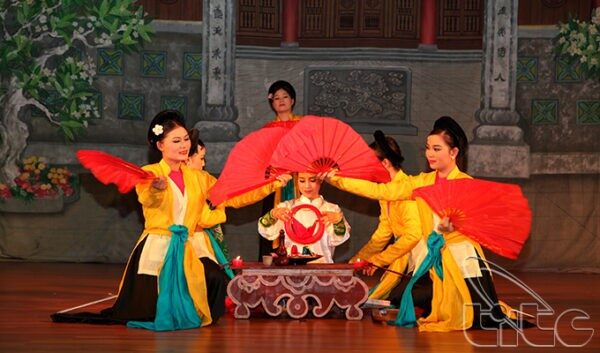On October 20, the Government’s Office issued Document 7611/VPCP-KGVX conveying the opinions of Deputy Prime Minister Vu Duc Dam on the preparation of dossiers of typical intangible cultural heritages of Vietnam to submit to UNESCO.
Specifically, the Deputy Prime Minister agreed to assign the Ministry of Culture, Sports and Tourism to assume the prime responsibility for, and coordinate with concerned ministries, branches and localities in preparing heritage dossiers for two intangible cultural heritages, including Cheo in the Red River Delta and Binh Dinh Traditional Martial Arts, submit to the Prime Minister for permission to submit to UNESCO for recognition as a world cultural heritage.

The Government has just agreed to assign the Ministry of Culture, Sports and Tourism to prepare a submission to UNESCO for recognizing Cheo art as a World Cultural Heritage.
As a type of folk theater art of the Vietnamese people, thriving and popular in the Red River Delta and two spreading areas, the Northern Midlands and Mountains and the North Central Coast, Cheo is popular and often associated with folk festivals. For generations, cheo singing has become a familiar form of cultural and artistic activities of the Vietnamese people, nurturing the national spiritual life by its deep and loving lyricism. In the treasure of national folk art and culture, cheo is a type of theater form imbued with ethnicity, with a skillful combination of a series of elements of singing, dancing, music and drama with extremely unique originality.
Through a long history from the 10th century to the present, the Cheo has penetrated deeply into cultural and social life, depicting the simple life of farmers, praising the noble qualities of people. In addition, there are also humorous cheo plays, criticizing bad habits and vices, fighting against injustice, expressing people’s personal feelings and emotions, reflecting the common concerns of people such as love, friendship and affection.
Binh Dinh Traditional martial art appeared very early and was popular in the Tay Son period in the 18th century. In 2012, the Ministry of Culture, Sports and Tourism registered Binh Dinh Traditional Martial Art as a national intangible cultural heritage.
H.A
